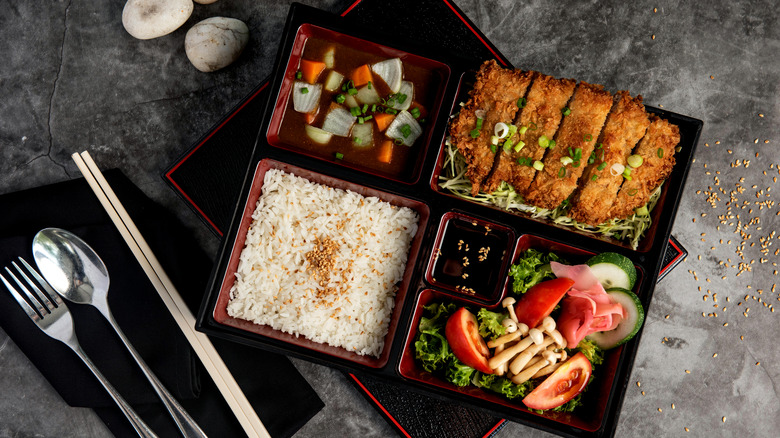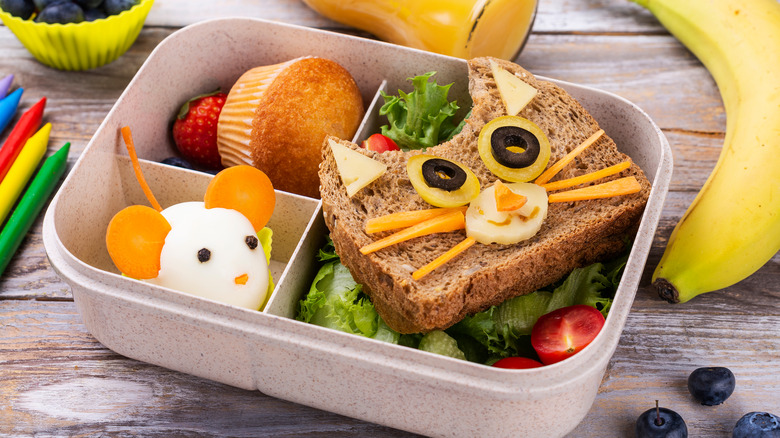Here's What To Expect From Japanese Obento
Cooking is often an expression of love or care. Whether it's for family members, a partner, or a friend, preparing a meal can show another person how much you care for them. In Japan, one of the greatest expressions of this love comes in the form of obento, or bento, boxes.
Obento are most often packed lunches that are organized in a way to be visually pleasing as well as nutritious (via Suki Desu). According to MasterClass, Kyaraben are special bento that are designed to resemble characters from cartoons, anime, or manga. The assembly of the boxes is so satisfying it's even become its own genre of TikTok videos.
According to Japan Objects, obento originated around 1568 during Japan's Azuchi-Momoyama period in the form of tightly packed wooden lacquered boxes. The snack would rise to prominence in the coming centuries. As train travel took off in Japan, obento also became the de facto packed meal for travelers riding the rails.
Obento contain a wide variety of foods
MasterClass notes that there are several different categories of obento. There's no real rules to their assembly, but there are some key components to strive for. According to Japan Society, a typical obento is usually made up of three parts rice, one part meat, and two parts fruits and vegetables. This provides the diner with a well-balanced diet, but the color of the dishes is also important. Japan Society notes that a frequent combination used is red, yellow, and green. Using this palette helps the obento box be more visually interesting as it's opened up by the lucky recipient.
Chopstick Chronicles also notes that they usually contain foods that will keep well, and can be enjoyed cold. The obento is a meal that can be enjoyed any time of the day, and because of its many components, it usually isn't reheated in a microwave. That's why foods such as traditional Japanese dishes like onigiri (rice balls) and tamagoyaki (omelets) are frequently used inside of them. Foods will also be separated by leaves, papers, or plastic partitions, and tightly packed to ensure that nothing shifts around or touches too much before the obento can be enjoyed.

